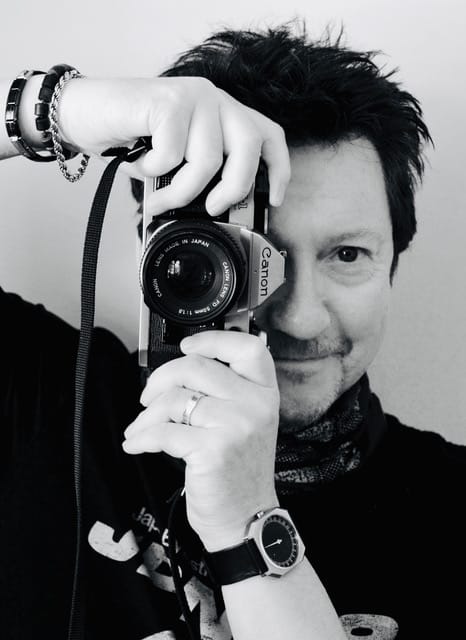Disability Arts in the North East – A Living Archive
A tribute to all the disabled artists and groups who have made up the Disability Arts Movement past and present
Last week we launched the On Whose Shoulders We Build exhibition at ARC. This exhibition came into being as there is so much history of disability arts activity in the North East but far too much of it remains hidden. Black Robin has an extensive collection of filmed and photographed work by disabled artists and didn’t think it should go dusty on the shelf, wanting instead to pay tribute to all those who have made a difference to the lives of disabled people through the arts in our region. He has begun to archive it and share an initial narrative of the community’s history, along with key figures from the movement in an online website. From a dynamic community of creative people, it’s essential that we preserve the heritage and also promote the disabled artists and activists creating amazing change today. Disability Arts, and disabled artists creating new work, remains a vibrant and essential arts scene.
About Black Robin
Black Robin is an Irish disabled artist based on the North East, specialising in the documentation of the work and work processes of disabled artists, with material spanning 20 years. He documents original processes and uses both film and photography. He also uses a specific form of portraiture exhibition to give disabled subject a voice and to give disabled people visibility. He has documented theatre, film, community, visual art and dance projects, as well as working a digital artist creating projections within performance with a number of disabled artists.
About the Exhibition
The archive is in its infancy, and there are lots of people, groups, and events to capture beyond Black Robin’s own work. He has invited twelve figures from the disability arts community – some long established and some reflecting a new generation of artists and activists. To reflect more people and events, each featured artist was invited to tell us about the history of their work, to share with us someone who has influenced or inspired them, a pivotal event they remember and a key message about disabled people living in 21st century Britain. A series of portraits becomes a portrait of a movement. The disability arts community is made up of 100s of people impossible to include in one exhibition, but the archive aims to include many more people and activities, and to find a way to broaden a much-needed education about this work to bring it out of the shadows.
Black Robin’s statement on this exhibition.
“As a photographer and filmmaker recording events meant that I was a witness to and for a time in the Disability Arts Movement that felt like a more cohesive time than we have today. As someone fairly new to disability arts in the 2000s I felt like disabled artists began to be taken seriously on mainstream stages.
Years of fight had gone into this of course; it didn’t just happen. It was work and perseverance of people like Geof Armstrong, Tom Shakespeare, Paula Greenwell, and Lindsay Carter, among many other artists and activists, which would continue to be carried forward even to today. It wasn’t that there was a sudden understanding in the mainstream arts sector I don’t think, as that battle still continues. The early pioneers created both space and a visibility that could no longer be ignored. Important voices were being heard. Making themselves heard.
I worked at Arcadea but also, I had begun documenting the work of disabled artists both here and in my home country of Ireland so that the work would not be forgotten. There are archives about Disability Arts –the brilliant Allan Sutherland’s Chronology of Disability and the NDACA Archive – providing excellent records of the national picture. Having the materials specific to the North East, which I believe has it’s own history, role and voice in the movement, it felt important to find a way to share that. We are indebted to the artists on whose shoulders we build and make progress.”
